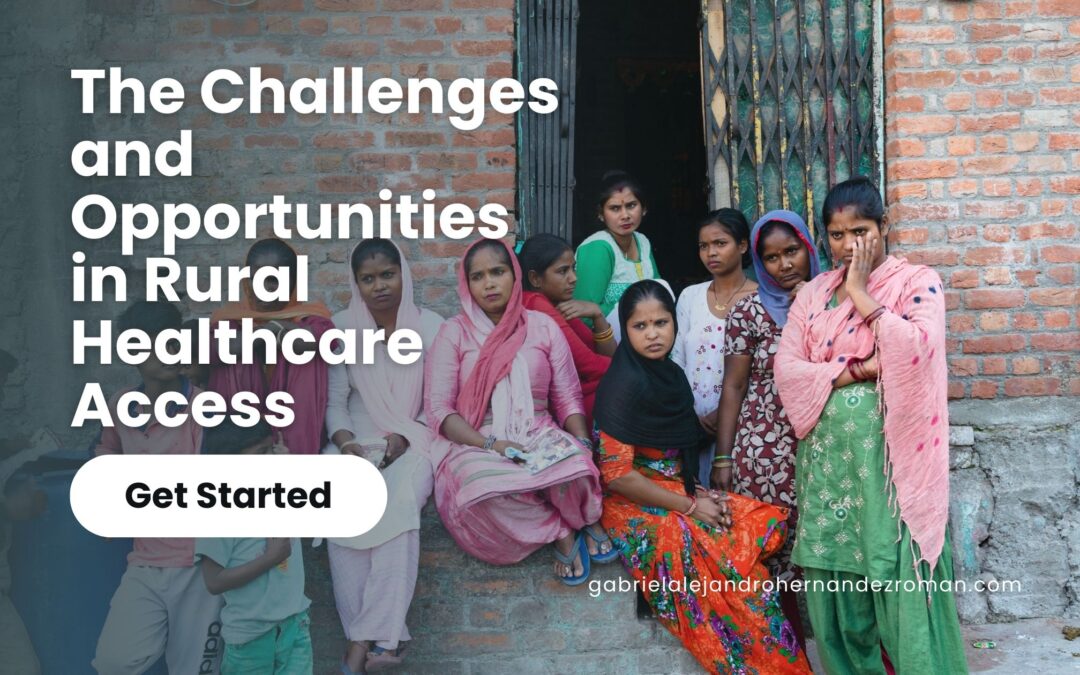Accessing healthcare in rural areas presents unique challenges and opportunities that impact the quality and availability of medical services for underserved populations. Addressing these challenges and leveraging opportunities can improve healthcare outcomes and ensure that rural communities receive the care they need.
One of the primary challenges in rural healthcare access is the geographic and logistical barriers that limit access to medical facilities and services. Rural areas often face shortages of healthcare providers, including primary care physicians, specialists, and mental health professionals. This shortage can result in longer wait times for appointments, reduced access to specialized care, and increased travel distances for patients seeking treatment. The lack of local healthcare infrastructure can also lead to delays in diagnosis and treatment, which can negatively affect health outcomes.
Financial constraints are another significant challenge for rural healthcare systems. Rural healthcare facilities may struggle with limited funding and resources, which can impact their ability to provide comprehensive services and maintain state-of-the-art equipment. Small rural hospitals and clinics often operate on tight budgets and may face difficulties in attracting and retaining skilled healthcare professionals. These financial challenges can lead to reduced services, facility closures, and limited access to essential care for rural residents.
Additionally, social and cultural factors can influence healthcare access in rural areas. Rural populations may experience barriers related to transportation, lack of health insurance, and limited health literacy. For example, patients in remote areas may have difficulty traveling long distances to reach healthcare providers, particularly if they lack reliable transportation or face financial constraints. Moreover, rural communities may have unique cultural attitudes and beliefs about healthcare that impact their willingness to seek care and adhere to treatment plans.
Despite these challenges, there are several opportunities to improve rural healthcare access and outcomes. Telemedicine has emerged as a powerful tool for bridging the gap between rural patients and healthcare providers. By using telehealth platforms, rural residents can access consultations, diagnostic services, and follow-up care without the need for extensive travel. Telemedicine can also facilitate collaboration between rural and urban healthcare providers, enabling the sharing of expertise and resources.
Strengthening partnerships between rural healthcare facilities, community organizations, and public health agencies can also enhance access to care. Collaborative efforts can lead to the development of community-based programs, such as mobile health clinics, outreach services, and health education initiatives. These programs can address specific needs, increase health awareness, and provide preventive and primary care services directly within rural communities.
Investing in training and support for rural healthcare providers is essential for improving care delivery. Programs that offer incentives for medical professionals to work in rural areas, such as loan repayment assistance, scholarships, and professional development opportunities, can help attract and retain skilled practitioners. Additionally, integrating interdisciplinary care teams, including nurse practitioners, physician assistants, and social workers, can enhance the range of services available in rural settings.
Policy initiatives and funding support are also crucial for addressing the challenges of rural healthcare access. Government programs and grants that focus on rural health initiatives can provide financial assistance to healthcare facilities, support workforce development, and promote innovative solutions. Advocacy for rural health issues can help raise awareness and drive policy changes that prioritize the needs of rural populations.
In conclusion, improving rural healthcare access involves addressing geographic, financial, and social barriers while leveraging opportunities such as telemedicine, community partnerships, and provider support. By focusing on these areas, policymakers, healthcare providers, and communities can work together to enhance healthcare access and outcomes for rural residents. Embracing innovative solutions and collaborative efforts can lead to a more equitable and effective healthcare system that serves the needs of all populations.

